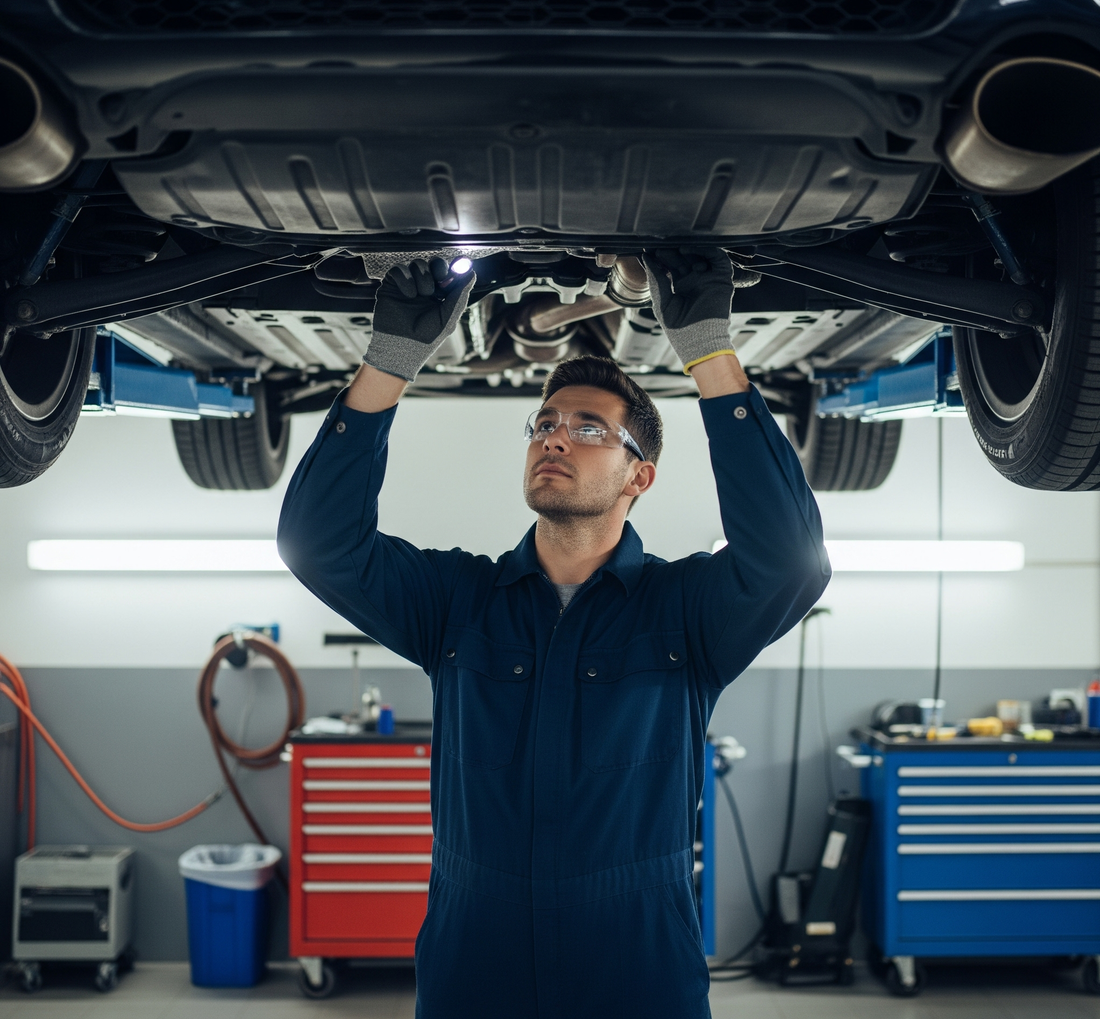
Top 5 Ways to Stay Safe as a DIY Car Mechanic
Share
Top 5 Ways to Stay Safe as a DIY Car Mechanic
Why safety has to come first
Automotive repair and maintenance logged 18,400 recordable workplace injuries in 2023—roughly 50 injuries every single day.(bls.gov) Most were entirely preventable. At MotorMate, we design tools that make wrenching smarter and safer, but the best protection is always an informed mechanic. Use the five practices below as your baseline whenever you roll up the garage door.
1. Suit up before you set up
-
Impact-rated eye protection stops flying rust or brake-pad dust.
-
Cut-resistant nitrile or hybrid gloves preserve dexterity while guarding against slices and chemical burns.
-
Hearing protection: Even a brief blast from an impact gun can reach 115 dB—enough to damage hearing in minutes.
-
Respiratory masks or half-face respirators for paint, solvent or brake work.
OSHA tags volatile organics, metal fumes and noise among the top hazards for auto-body and repair workers.(osha.gov)
2. Build a hazard-free bay
A tidy workspace is PPE for your feet—and your project schedule.
| Quick checklist | Why it matters |
|---|---|
| Sweep floors and mop spills immediately | Oil slicks are a leading slip hazard |
| Keep tools in shadow-free, magnetized trays (MotorMate Parts Tray) | Reduces “hardware on the floor” injuries |
| Use bright, hands-free LED work lights | Eyes stay on the job, not the flashlight |
| Ventilate with a box fan or open bay doors | Paint and fuel fumes linger at nose height |
OSHA lists “oil and grease on walking surfaces” and poor ventilation as key physical hazards in shops.(osha.gov)
3. Power down before you wrench
Electric arcs and fuel sprays send plenty of DIYers to the ER. Follow a mini lockout/tagout routine:
-
Disconnect the negative battery cable and isolate it with a rubber cap.
-
Depressurize fuel rails via the Schrader valve or fuel-pump relay.
-
Open the radiator cap only when cool—use a rag and tilt away.
-
Label and stow fuses you’ve pulled so they go back in the right slot.
OSHA’s vehicle-maintenance guidance emphasizes de-energizing systems—and controlling flammable liquids—before any service begins.(osha.gov)
4. Lift heavy the right way
-
Rated floor jack + pair of jack stands (never the jack alone).
-
Chock diagonal wheels first, then raise slowly until the load settles on stands.
-
Engine support bar (MotorMate Engine-Brace) keeps drivetrains steady during mount or transmission swaps.
-
Torque wrenches: Over-tightened lug nuts stretch studs; under-torqued wheels come off.
One crushed-vehicle incident can bankrupt a hobby and change a life. OSHA lists lifts and falling objects among the top physical threats to mechanics.(osha.gov)
5. Control chemicals—and potential fires
-
Store solvents and fuels in UL-listed metal cans; label everything.
-
Ground yourself before working near the fuel tank to bleed static.
-
Keep a charged 2½-lb Class B/C extinguisher within a 10-second reach.
-
Dispose of oily rags in a self-closing metal bin to stop spontaneous combustion.
OSHA rules require “means, methods or processes” to mitigate flammability, corrosion and electrical hazards during vehicle maintenance.(osha.gov)
The MotorMate difference
Ready to level up your safety stack? Explore the MotorMate collection—because the best repair story is the one where everyone goes home with the same number of fingers they started with.
Stay sharp, stay organized, stay MotorMate-safe.
